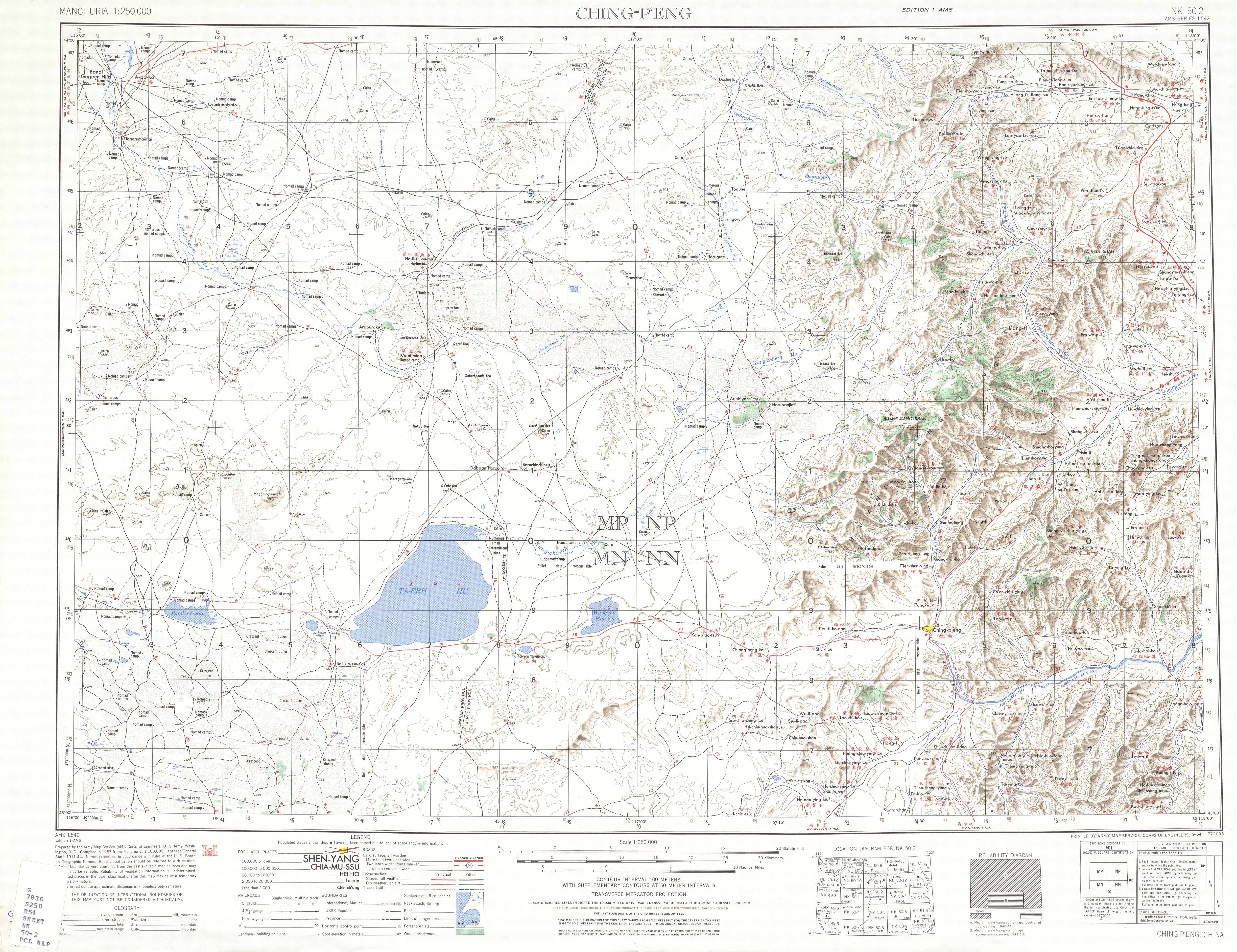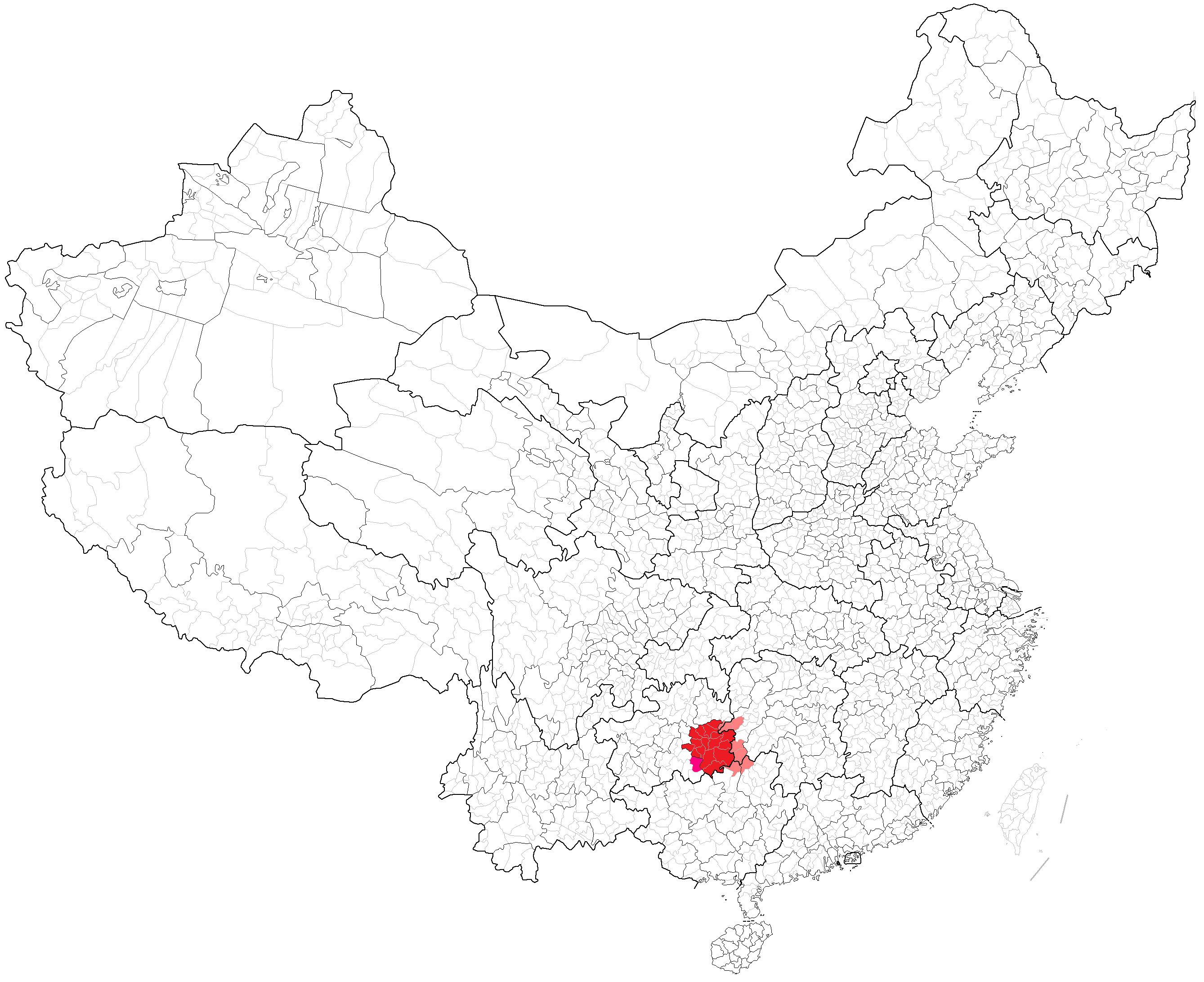|
Hexigten Banner
Hexigten Banner (Mongolian script: ; ) is a banner of Inner Mongolia, China under the jurisdiction of Chifeng, bordering Hebei province to the south. In 1690 the Battle of Ulan Butung between Qing and Dzungar forces took place here. Etymology It was named after the Khishigten Mongol clan, who were considered to be the descendants of the Kheshig, the imperial guard of the Mongol Empire. Demographics There are 8 main ethnic groups (i.e. Han, Mongol, Hui, Manchu, Daur, Korean, Dong and Zhuang). The Mongols are of the Hishigten division. Climate Transport * China National Highway 303 *China National Highway 306 * Hanbai Highway * Jitong Railway Economy The main industries are mining, renewable energy, tourism, and stock breeding. From 2006 to 2008, Hexigten ranked No. 1 for 3 consecutive years in wind power production among all the counties of China with 532 wind turbines installed in 2008, totally installed generating capacity of 525 megawatt and annual energy generat ... [...More Info...] [...Related Items...] OR: [Wikipedia] [Google] [Baidu] |
County (People's Republic Of China)
Counties ( zh, t=縣, s=县, hp=Xiàn), formally county-level divisions, are found in the Administrative divisions of China#County level, third level of the administrative hierarchy in Provinces of China, Provinces and Autonomous regions of China, Autonomous regions and the second level in Direct-controlled municipality#People's Republic of China, municipalities and Hainan, a level that is known as "county level" and also contains autonomous county, autonomous counties, county-level city, county-level cities, Banners of Inner Mongolia, banners, Banners of Inner Mongolia#Autonomous banner, autonomous banners and District (China)#City districts, City districts. There are 1,355 counties in Mainland China out of a total of 2,851 county-level divisions. The term ''xian'' is sometimes translated as "district" or "prefecture" when put in the context of History of China, Chinese history. History ''Xian'' have existed since the Warring States period and were set up nationwide by the ... [...More Info...] [...Related Items...] OR: [Wikipedia] [Google] [Baidu] |
Han Chinese
The Han Chinese () or Han people (), are an East Asian ethnic group native to China. They constitute the world's largest ethnic group, making up about 18% of the global population and consisting of various subgroups speaking distinctive varieties of the Chinese language. The estimated 1.4 billion Han Chinese people, worldwide, are primarily concentrated in the People's Republic of China (including Mainland China, Hong Kong and Macau) where they make up about 92% of the total population. In the Republic of China (Taiwan), they make up about 97% of the population. People of Han Chinese descent also make up around 75% of the total population of Singapore. Originating from Northern China, the Han Chinese trace their cultural ancestry to the Huaxia, the confederation of agricultural tribes living along the Yellow River. This collective Neolithic confederation included agricultural tribes Hua and Xia, hence the name. They settled along the Central Plains around the middle ... [...More Info...] [...Related Items...] OR: [Wikipedia] [Google] [Baidu] |
Megawatt
The watt (symbol: W) is the unit of power or radiant flux in the International System of Units (SI), equal to 1 joule per second or 1 kg⋅m2⋅s−3. It is used to quantify the rate of energy transfer. The watt is named after James Watt (1736–1819), an 18th-century Scottish inventor, mechanical engineer, and chemist who improved the Newcomen engine with his own steam engine in 1776. Watt's invention was fundamental for the Industrial Revolution. Overview When an object's velocity is held constant at one metre per second against a constant opposing force of one newton, the rate at which work is done is one watt. : \mathrm In terms of electromagnetism, one watt is the rate at which electrical work is performed when a current of one ampere (A) flows across an electrical potential difference of one volt (V), meaning the watt is equivalent to the volt-ampere (the latter unit, however, is used for a different quantity from the real power of an electrical circu ... [...More Info...] [...Related Items...] OR: [Wikipedia] [Google] [Baidu] |
Wind Turbine
A wind turbine is a device that converts the kinetic energy of wind into electrical energy. Hundreds of thousands of large turbines, in installations known as wind farms, now generate over 650 gigawatts of power, with 60 GW added each year. Wind turbines are an increasingly important source of intermittent renewable energy, and are used in many countries to lower energy costs and reduce reliance on fossil fuels. One study claimed that, wind had the "lowest relative greenhouse gas emissions, the least water consumption demands and the most favorable social impacts" compared to photovoltaic, hydro, geothermal, coal and gas energy sources. Smaller wind turbines are used for applications such as battery charging for auxiliary power for boats or caravans, and to power traffic warning signs. Larger turbines can contribute to a domestic power supply while selling unused power back to the utility supplier via the electrical grid. Wind turbines are manufactured in a wide ... [...More Info...] [...Related Items...] OR: [Wikipedia] [Google] [Baidu] |
China National Highway 306
China National Highway 306 (G306) runs northwest from Suizhong, Liaoning towards Hexigten Qi, Inner Mongolia and spans 497 kilometres. Route and distance See also * China National Highways The China National Highways (CNH/Guodao) () is a network of trunk roads across mainland China. Apart from the expressways of China that are planned and constructed later, most of the CNH are not controlled-access highways. History The bui ... {{China National Highways Transport in Liaoning Transport in Inner Mongolia 306 ... [...More Info...] [...Related Items...] OR: [Wikipedia] [Google] [Baidu] |
China National Highway 303
China National Highway 303 (G303) runs from Ji'an, Jilin to Xilinhot, Inner Mongolia. It is 1,263 kilometres in length and runs northwest from Ji'an through Jilin and Liaoning and ends in Inner Mongolia. Route and distance See also * China National Highways The China National Highways (CNH/Guodao) () is a network of trunk roads across mainland China. Apart from the expressways of China that are planned and constructed later, most of the CNH are not controlled-access highways. History The bui ... External linksOfficial website of Ministry of Transport of PRC 303 Transport in Liaoning Transport in Jilin Transport in Inner Mongolia {{PRChina-road-stub ... [...More Info...] [...Related Items...] OR: [Wikipedia] [Google] [Baidu] |
Zhuang People
The Zhuang (; ; za, Bouxcuengh, italic=yes; ) are a Tai-speaking ethnic group who mostly live in the Guangxi Zhuang Autonomous Region in Southern China. Some also live in the Yunnan, Guangdong, Guizhou, and Hunan provinces. They form one of the 56 ethnic groups officially recognized by the People's Republic of China. With the Bouyei, Nùng, Tày, and other Northern Tai speakers, they are sometimes known as the Rau or Rao people. Their population, estimated at 18 million people, makes them the largest minority in China, followed by the Hui and Manchu. Etymology The Chinese character used for the Zhuang people has changed several times. Their autonym, "Cuengh" in Standard Zhuang, was originally written with the graphic pejorative , (or ''tóng'', referring to a variety of wild dog).漢典.獞. Chinese. Accessed 14 August 2011. 新华字典, via 中华昌龙网. 字典频道.". Chinese. Accessed 14 August 2011. Chinese characters typically combine a semantic element or ... [...More Info...] [...Related Items...] OR: [Wikipedia] [Google] [Baidu] |
Dong People
The Kam people, officially known in China as Dong people (; endonym: , ), a Kam–Sui people of Southern China, are one of the 56 ethnic groups officially recognized by the People's Republic of China. They are famed for their native-bred ''Kam Sweet Rice'' (), carpentry skills and unique architecture, in particular a form of covered bridge known as the "wind and rain bridge" (). The Kam people live mostly in Eastern Guizhou, Western Hunan and Northern Guangxi in China. Small pockets of Kam speakers are found in Tuyên Quang Province in Vietnam. The Kam people call themselves Kam, Geml, Jeml or Gaelm. History The Kam are thought to be the modern-day descendants of the ancient Liáo (僚) peoples who occupied much of southern China.D. Norman Geary, Ruth B. Geary, Ou Chaoquan, Long Yaohong, Jiang Daren, Wang Jiying (2003). ''The Kam People of China: Turning Nineteen''. (London / New York, RoutledgeCurzon 2003). . Kam legends generally maintain that the ancestors of the Kam mi ... [...More Info...] [...Related Items...] OR: [Wikipedia] [Google] [Baidu] |
Koreans In China
Koreans in China (), Korean Chinese (), Joseonjok, Chosŏnjok (), or Chaoxianzu (), are Chinese by nationality and are Koreans by ethnicity (with either full or partial Korean ancestry). A majority of the chaoxianzu are descendants of immigrants from Korean peninsula from recent immigration. The Chinese government officially recognize them as one of the 56 ethnicities being part of the 55 ethnic minorities in China. They are the 13th largest minority group in China. Their total population was estimated at 1,923,842 and 1,830,929 according to the 2010 Chinese census. High levels of emigration to the Republic of Korea for better economic and financial opportunities, which has conversely reported a large increase of Korean Chinese in Korea, are the likely cause of the drop in China. Most of them live in South Korea and Yanbian Korean Autonomous Prefecture. They are also located in Heilongjiang, Liaoning, and Inner Mongolia Autonomous Region. The population of Koreans in China i ... [...More Info...] [...Related Items...] OR: [Wikipedia] [Google] [Baidu] |
Daur People
The Daur people (Khalkha Mongolian: Дагуур, ''Daguur''; ) are a Mongolic people in Northeast China. The Daur form one of the 56 ethnic groups officially recognised in the People's Republic of China. They numbered 131,992 according to the latest census (2010) and most of them live in Morin Dawa Daur Autonomous Banner in Hulun Buir, Inner Mongolia and Meilisi Daur District in Qiqihar, Heilongjiang of China. There are also some near Tacheng in Xinjiang, where their ancestors were moved during the Qing dynasty. Language The Dagur language is a Mongolic language. There is a Latin-based orthography which has been devised by a native Daur scholar. The Dagur language retains some Khitan substratal features, including a number of lexemes not found in other Mongolic languages. It is made up of three dialects: Batgan, Hailar, Qiqihar. During Qing rule, some Daur spoke and wrote Manchu as a second language. History Genetically, the Daurs are descendants of the Khitan, as ... [...More Info...] [...Related Items...] OR: [Wikipedia] [Google] [Baidu] |

.jpg)



